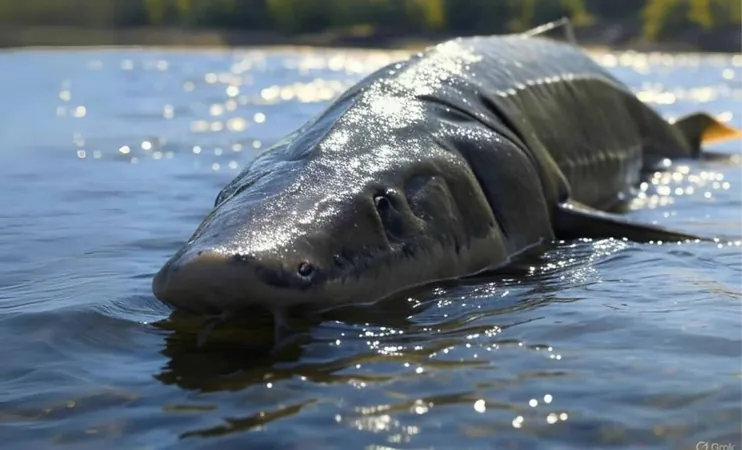
Swam With Dinosaurs: The Race to Save the Elusive Syr Darya Sturgeon
2025-04-18
Author: Jessica Wong
A Prehistoric Survivor in Peril
Once a cohabitant of the age of dinosaurs, the Syr Darya sturgeon—a relic species that has evaded observation since the 1960s—may still be lurking in the murky waters of a river in southern Kazakhstan. Scientists are on a desperate quest to discover whether this ancient fish has truly escaped extinction.
A Living Fossil on the Brink
The Syr Darya sturgeon is a small powerhouse of prehistoric features, measuring only 22 centimeters long. Boasting a long, flattened snout and sharp bony plates, it shares striking similarities with its gigantic relatives like the beluga sturgeon, which can grow over seven meters. For 162 million years, these remarkable fish have navigated massive environmental shifts, outlasting catastrophic events including the meteor impact that wiped out the dinosaurs. However, the greatest threat it now faces comes not from nature—but from humanity.
Environmental Devastation: A Deadly Transformation
Aquatic ecosystem biologist Bernie Kuhajda journeyed to the Syr Darya River last December, motivated by a blend of nostalgia and hope. Previously, his glimpses of the Syr Darya sturgeon were limited to preserved specimens in museums across major cities like London and Moscow. The river's landscape, lined with dormant grasses, appears uninviting but is the very location where he believes this forgotten species might still exist.
The disappearance of the sturgeon closely links to the Soviet-era constructions of dams that dramatically altered the river's natural flow, blocking vital spawning grounds and disrupting the ecosystem that feeds into the Aral Sea.
The Alarming Decline of Sturgeon Species
The global reality for sturgeons is dire. According to the International Union for Conservation of Nature, a staggering 17 out of 25 species are critically endangered, with one already declared extinct in the wild. Since 1970, sturgeon populations have plummeted by a shocking 94%.
Their migratory breeding habits make them especially sensitive to environmental changes, as dams and agricultural practices have destroyed their natural pathways. Furthermore, pollution from agriculture and mining has degraded water quality, introducing toxins harmful to the eggs and young fish.
A Beacon of Hope Amidst Despair
Despite the challenges, Kuhajda and colleague Dave Neely are undeterred. Should they identify a surviving population, they intend to implement a conservation strategy that involves capturing mature fish, fertilizing their eggs in hatcheries, and rearing juveniles for release back into their natural habitat.
Encouraged during a roadside encounter with a local fisherman who claimed to have caught a similar fish years ago, Kuhajda’s spirits are lifted. This anecdote has added urgency to their mission, suggesting that hope may still swim beneath the murky surface of the river.
Armed with custom-made nets, the researchers are now scouring the silty depths of the Syr Darya. For a species that has managed to exist for 160 million years, its survival now hangs in the balance as researchers strive to uncover its fate.


 Brasil (PT)
Brasil (PT)
 Canada (EN)
Canada (EN)
 Chile (ES)
Chile (ES)
 Česko (CS)
Česko (CS)
 대한민국 (KO)
대한민국 (KO)
 España (ES)
España (ES)
 France (FR)
France (FR)
 Hong Kong (EN)
Hong Kong (EN)
 Italia (IT)
Italia (IT)
 日本 (JA)
日本 (JA)
 Magyarország (HU)
Magyarország (HU)
 Norge (NO)
Norge (NO)
 Polska (PL)
Polska (PL)
 Schweiz (DE)
Schweiz (DE)
 Singapore (EN)
Singapore (EN)
 Sverige (SV)
Sverige (SV)
 Suomi (FI)
Suomi (FI)
 Türkiye (TR)
Türkiye (TR)
 الإمارات العربية المتحدة (AR)
الإمارات العربية المتحدة (AR)